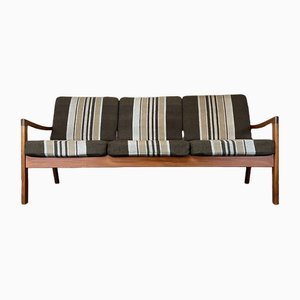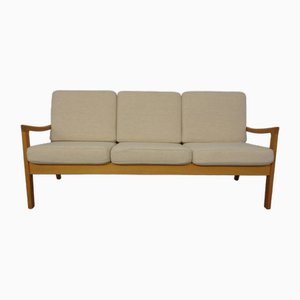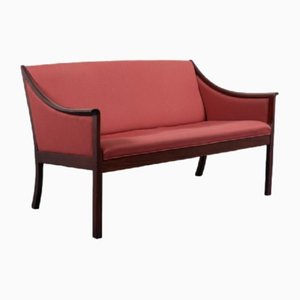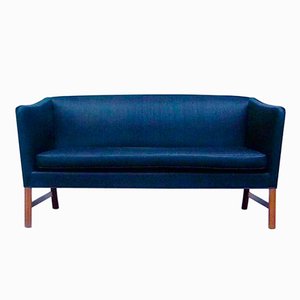
Born in Copenhagen in 1903, Danish architect-designer Ole Wanscher was a key player in Denmark's midcentury modern movement. In the postwar era, the simple and refined aesthetic he achieved by reinventing classic forms helped define Scandinavian design, and many of his pieces became staples in Scandinavian homes.
Wanscher studied at the Royal Danish Academy of Fine Arts under famous architect-designer Kaare Klint (1888-1954). Upon graduating, Wanscher worked with Klint from 1924 to 1927 and, after Klint passed away, Wanscher was given Klint's professorship at the academy —a position he held until he retired in 1973.
In 1927, Wanscher opened his own architecture firm, specializing in furniture design. Like Klint, Wanscher disagreed with the modernist full-sail rejection of the past and preferred to explore classic yet minimal aesthetics informed by precise study of the human body. Wanscher was also heavily influenced by Greek, Chinese, and Egyptian designs—which he encountered during his many travels abroad—as well as proto-modernist movements, like the Viennese Secession, Biedermeier, and Shaker styles.
Between the 1940s and 1960s, Wanscher enjoyed fruitful collaborations with small-scale, artisanal cabinetmakers, like the masterful A. J. Iversen (1888-1979), as well as well as larger-scale Danish companies, such as France & Søn, Fritz Hansen, Poul Jeppesen, and Rud Rasmussen. With Iversen, he created the iconic Ladies Desk (1954) and Egyptian Stool (1957). Other standout Wanscher designs include the PJ-149 Colonial Chair (1949), Rungstedlund Dining Chair (ca. 1950), and PJ-112 Sofa (1951) for Poul Jeppesen; as well as the 110 Rocking Chair (1951) and Senator Easy Chair (1951) for France & Søn .
Wanscher went on to write various articles and publish several books on design history, such as The History of the Arts of Furniture (1956) and Five Thousand Years of Furniture (1967).
Although less known than many of his contemporaries—Finn Juhl, Hans Wegner, Poul Henningsen, and so on—Wanscher made a strong impression on many important critics. In 1958, Sven Erik Moller wrote in Danish newspaper Politiken: "If one owns a chair by Wanscher, it will be an experience every day—perhaps for hundreds of years, because that is how long it will last. One senses the man behind the chair and the value of man-made work…" And in 2003, famous New York Times art critic Roberta Smith commented: "He combined fully and equally the talents of a master craftsman, designer, and sculptor with those of a historian. In particular, his sensitivity to the luster and living delicacy of wood enabled him to bring organic life and a rich sense of the past to the indelibly modern spareness of the International Style."
Wanscher passed away in 1985. Many of Wanscher's design remain in production with Carl Hansen & Søn.










